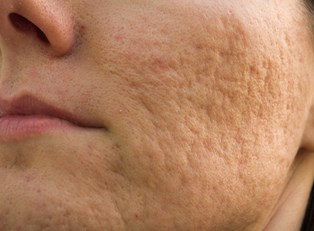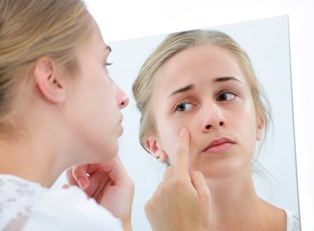Blackheads are typically small, dark spots that can appear on the skin of your face, back, neck, arms, or shoulders. The surface of blackheads usually looks dark or black because they are essentially enlarged pores or hair follicles that have been clogged with oil or bacteria.
Though blackheads are a common problem, especially for teens and young adults, it can be hard to know just how exactly you are supposed to get rid of them. There are several different approaches you can take for treatment in this area, ranging from home remedies to prescription medications. The hardest part of selecting a blackhead treatment will be simply figuring out which approach works best for you and your skin type.
Over-the-Counter Medications
Drugs that contain salicylic acid, benzoyl peroxide, and resorcinol can all be found at your local pharmacy and do not require a prescription. These medications are available in cream, gel, and pad forms and are usually put directly on your skin. These treatments work by a variety of methods, such as drying excess oil, forcing your skin to shed excess dead skin cells, and killing bacteria.
Prescription Medications
Sometimes over-the-counter treatments aren’t strong enough to combat your acne. If this is the case, visiting a doctor or dermatologist who can prescribe you a stronger medication might be necessary. Some commonly prescribed medications include tretinoin, tazarotene, and adapalene. These medications are usually in gel or cream forms, and they work by keeping plugs from forming in your hair follicles and promoting faster skin cell turnover.
Other options include topical medications that contain a combination of antibiotics and benzoyl peroxide, but these are usually more helpful if you have pimples or acne cysts in addition to your blackheads.
In-Office Treatments
At your local dermatology clinic, in-office treatments for blackheads and other forms of acne are usually available. Although physically removing blackheads from your skin at home is unhealthy, dermatologists specialize in skincare and are able to use special instruments such as a round loop extractor to remove the plugs that are causing your blackheads.
Another option provided by your dermatologist is called microdermabrasion. This involves a special instrument that uses a rough surface to "sand away" the top layers of your skin and removes clogs.
Laser and light therapies are other in-office treatments that use tiny beams of intense light in order to decrease your oil production while also killing bacteria on the skin. This type of therapy reaches below the surface of your skin to treat your acne without damaging the visible, top layers of your skin.
Chemical Peels
This route involves applying a strong chemical solution to the surface of your skin. Over time, the top layers of your skin will peel off and you will be left with the smoother skin that's currently underneath. This is an option that ranges from mild over-the-counter chemicals to stronger peels that can only be performed by your dermatologist.
Home Remedies
There are many ways to treat your blackheads yourself, using only the ingredients found in your kitchen. For example, scrubbing with baking soda has proven to be an effective way to treat and reduce blackheads for some people. Mixing a few teaspoons of baking soda with mineral water creates a paste, which you can then apply to your problematic skin areas.
Some other commonly used at-home treatments include ingredients such as cinnamon, oatmeal, lemon juice, green tea, and honey. This can be a simple, low-cost, effective way to naturally treat your blackheads without resorting to harsh chemicals and medications.



